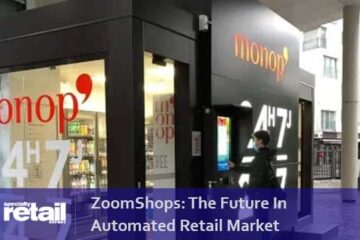Call it “street,” call it “urban,” the look, almost a lifestyle. It is defined by vibrant, sometimes free fashion and transmitted through the channels of hip-hop music, sports, and entertainment. It’s about attitude, and American youth is eating it up.
Hip-hop, as per the author Nelson George of the book Hip-Hop America, represents “the culture of black Generation X, a baggy-pant, inner city, an in-your-face culture that has made its way into suburbia.” Urban fashion has gone through a massive defining change in the last decade or so. Previously simply referred to as “ghetto” or “black,” is now considered cool in the mainstream America.
The Story Behind Urban Fashion
Young designers who grew up in urban neighborhoods started creating fashions inspired by the hip-hop culture. Style trends originate in the streets through urban kids. They participate in city culture and decide what’s cool and what’s not at any given time.
“Streetwear” was first created and later bought by young African Americans and Hispanics in major urban areas. Celebrities picked up those trends and made them popular. Then, mainstream American kids imitated their style, starting in the ’80s and continuing today with J. Lo, P. Diddy, and others.
Children look up to celebrities for their fashion inspiration. However, Rachel Roy, the creative director of women’s fashion at Rocawear, asserts that this is true. Although celebrities themselves rely upon stylists who get their creative juices from the streets.
Even so, suburban kids may not realize they’re copying true “urban style” when they try to look like Mary J. Blige or Nelly, Lil Kim or 50 Cent. Thanks to the Internet, MTV, and the enduring popularity of hip-hop, the “cul-de-sac kids”, white kids in quiet, suburban neighborhoods’ miles from New York, Detroit, Chicago, or LA are influenced by the slang and fashion that was born of and once confined to inner-city streets.
Bored with everyday life in middle-class suburbia, these kids want a piece of dynamic city culture. This is true even if their only connection to anything urban is through language, music, clothes, shoes, and accessories.
Urban fashion represents a way of life that transcends geographical limitations. It is an illustration of what society perceives as cool, merging fashion, music, and image, not a passing trend.
Cohen believes that the US urban fashion business will reach a value worth about $2 billion this year. So, youth-focused retailers can’t overlook this astounding potential.
Its All About The Cool Changes
Retailers have a hard time embracing the ever-evolving urban fashion. Yet Marshall Cohen highlights that doing so might hinder them from appealing to the market’s young buyers.
However, he also makes a warning about peddling substandard imitations of urban trends. Cohen believes that it is a better option for stores to abstain from selling true urban fashion completely. Teens can differentiate between actual items and imitations.
However, staying on top of the latest urban looks can be difficult because “urban” means something different from person to person.
Young consumers fascinated with big-city fashion tend to be picky and hard to please. It’s often difficult to pinpoint what they’re looking for, and to figure out a style characterized by elusive features.
On the other hand, urban fashion is a dynamic and fascinating market with huge profit potential. Retailers who want to stay on their game must watch urban trends closely by following style cues from the magazines, music videos, films and Web sites that define and communicate what’s “cool.”
True urbanites usually create their own styles, and it’s practically impossible to guess what kind of accessories or clothes they’ll love.
Many kids in suburbia look to tv for fashion inspiration and try at imitating the looks of their beloved pop stars. Even if they adore hip-hop music and the urban lifestyle, mainstream fashion labels and high-end designers usually offer designs that are too contemporary .
To address this niche, Suburban Industries established the White Boy brand, which is aimed particularly toward suburban youngsters. The CEO, Joe Shortal, contends that the term “whiteboy” is used by African American children for a white person who fits in their society.
Blending Up The Tastes
There is no universal definition of urban style. It doesn’t conform to established rules of fashion. It’s created by many subcultures that constantly draw from each other to create this unique, artful blend.
Laurent Huttinot, sportswear and entertainment manager at Complex, a multicultural lifestyle magazine rooted in metropolitan culture, says that urban style is all about mixing and matching pieces that don’t belong together, a style dictated by nobody but yourself.
Customers in cities nowadays don’t try to come off like everyone else. They respect personal preferences and have the confidence to diverge from mainstream fashion standards, not wanting a similar appearance to one another.
One example of this new urban individuality is Herring Green, the 22-year-old artist who resides in New York City’s Lower East Side. Green is critical of labels and brand names, often wiping or masking them in black spray paint. As it allows him to convey his style without endorsing any specific brands, he considers being unlabelled as a form of rebellion. He prefers simple goods that he distresses himself, and this street-inspired appearance is influenced by his Bronx background.
The word “street” doesn’t refer to cheaper clothing; instead, it implies creativity, art, and youthfulness. Even renowned designer labels such as Chanel and Dolce & Gabbana derive their ideas from the bustling streets of big cities. Rocawear’s Rachel Roy brings up that “urban” is no more a reference to “the typical ghetto stuff.” It merges a variety of cultures with a street sway, contrasting the gritty with the exquisite.
Urban fashion empowers people to showcase their distinctive personal style by fusing elegant and street aspects, so they look hip and in-the-know. The urban girl possesses a knack for fusing routine clothes in creative ways to display her distinctive style while staying fashionable, modern, and classy.
The Gritty City
Urban fashion for males, as described by Steve Patino, general manager and buyer at Sprint 2, a clothing retailer in Queens, New York, that deals in urban, skate, and nightlife fashion, is represented by comfortable, loose clothing with an element of roughness.
These garments prioritize functionality over fanciness to convey the resilience needed for living in a major urban area. The focus is on an urban market’s average utilitarian “construction worker” appearance.
It takes mindful colour coordination to give off an authentic urban vibe. However, the typically loud and defiant “tough guy” look is getting mellow. According to Patino, the urban community has started to favor basic button-down shirts and others that are patterned after classic silhouettes from brands such as Brooks Brothers and Polo.
Rappers and hip-hop artists, who have established themselves as fashion icons and trendsetters, contribute to this shift in fashion. Following their style gives someone an aura of credibility and brings one to the level of multimillionaire rap artists.
Inspirations and Individuality
MTV and people in real life serve as primary avenues for fashion inspiration for 17-year-old Stuyvesant High School girl Asia Dearly. Dearly thinks that the main goal of urban style is to make herself stand out, which can be seen by her love for striking orange sneakers. Her style has an air of luxury as she also likes chunky earrings and a jewellery-heavy look.
Malls in the suburbs offer somewhat toned-down replicas of original urban attire that still radiate the lure of the big city. Since suburban girls aren’t as likely to take style risks as their urban counterparts, Rachel Roy speculates that suburban females endorse simpler, easier-to-understand patterns.
The mainstream American recognition of urban trends, particularly among Generation Y, is heavily influenced by music videos.
Urban fashion’s “forbidden fruit” charm is what keeps it so attractive in mainstream America, among youngsters. Teenagers who live in safe yet commonly dull suburbs seek out distinct and non-generic apparel, looking to MTV and mags for inspiration outside what is accessible locally.
Following rap stars seems appealing since it raises eyebrows, says urban anthropologist and screenplay professor Michael Holman. When conventional methods fail, it works as a rebellious sword for teens looking to shock their parents. As kids never wish to blend in, urban style helps them to stand out from the crowd and get noticed. Youths who are dissatisfied and rebellious across ethnicities and geographies connect with the art form and expressions of rap and hip-hop.
Tyler Adel, a 15-year- at Paramus High School, comments that “ghetto” and “street” are often used alternatively with the terms cool, with an affinity to businesses like Enyce that display a “ghetto-ish” appearance. Adel underlines how TV, notably music videos, has an influence on how teens dress in Paramus and across the country.
Hip-Hop Top Pop
Hip-hop music is the top music genre among young listeners, and it’s impossible to ignore its huge influence. Rap and hip-hop emerged from largely impoverished African American neighborhoods in the Bronx, the “New York City borough where hip-hop was born and raised” (rapdict.org).
For teens and young adults, hip-hop is the way to make a statement and differentiate themselves from their parents’ generation. For marketers, it’s a great tool for boosting sales of a wide range of disparate but desirable products from soft drinks to cell phones, credit cards to cars.
As reported by BusinessWeek, hip-hop culture has a significant 25% influence on spending habits in the US. Recognizing hip-hop’s predominance in teenage culture, major retail corporations have plans to cash in on its popularity and gritty authenticity.
As George says in Hip-Hop America, donning a Phat Farm shirt or other similar hip-hop attire does not imply that you endorse all aspects of hip-hop. It just shows that you believe your clothes are fashionable and appealing.
However, a lot of parents erroneously associate the fashion of the hip-hop music genre with the lyrics, which tend to be rough, misogynistic, and explicit. As a result, they prefer that their children wear “nice” conventional attire.
Hip-hop brands walk a fine line between sexy and vulgar, alluring, and dangerous, cool, and offensive; and they must do it carefully. On the flip side, many companies try to avoid the “urban” label because they’re aware of parents’ sentiments, and/or believe it perpetuates stereotypes. They want to adopt the cool side of “street” without seeming to endorse its drug-dealer culture or violence.
Urban Style For Fashion Conscious Kids
Even before they enter school, kids in America get a sense of urban-inspired fashion. Toy makers have taken notice, responding to, and reinforcing the reality. Following the huge success of Bratz, MGA’s streetwise fashion dolls, Mattel brought out Flavas, a line of highly successful hip-hop-themed ethnic dolls.
5-years old Camille is a fashionista who always wears color-coordinated outfits and is mindful of current fashions such as faux-fur coats that have low collars and low-rise jeans with flares. She chooses Bratz dolls to Barbie dolls, and her stash of stickers consists of gritty urban-themed graphics.
One sticker depicts a curvy-jeans-wearing inner-city girl having braided hair, dark skin, and a feisty urban demeanor. She is also sporting a red crop top, a beaded bandanna, and extravagant sneakers. The sticker effectively portrays the spirit and aesthetic of the urban lifestyle.
Who would have thought a little girl in rural Pennsylvania would be surrounded with urban everything. But that’s the phenomenon that is urban style: its magnetism pulls on everyone, and the demographics are all-encompassing.
From 5-year-olds on quiet cul-de-sacs to rebellious teen boys on bustling city streets to adult professionals of both genders, consumers across America want to be on top of the trend. In a mere 10 years, “urban” has become “universal,” managing to transcend race, economics, social strata-and geography. Hip-hop is here.




